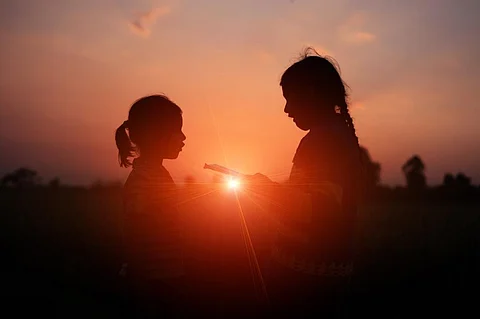

India has several mechanisms in place to combat child marriages, but the practice is still regarded as an important custom for over half the parents and parents-in-law in India, a new study by an India-based non-profit has found. As a result, three out of fice child brides report teenage pregnancies.
At least 1.5 million girls under 18 get married in India, according to the United Nations child rights body (UNICEF). Child marriage adversely impacts children, and girls in particular, in multiple ways, said the study by Child Rights and You (CRY) released Children’s day November 14, 2002.
A significant proportion of adolescent mothers had low-birth-weight babies and challenges in systematic responses at the village level are a major roadblock in combating child marriage, said Child Marriage in India: A Research Study. The pandemic might have escalated the number of cases of child marriage as well, it said.
The research was conducted in 40 villages of eight blocks from four districts in the states of Andhra Pradesh, Uttar Pradesh, Maharashtra and Odisha. Mean age at marriage of females during child marriage is lowest in Uttar Pradesh (16.3 Years) followed by Odisha (16.5 years), Andhra Pradesh (16.6 years) and Maharashtra (17), while the national average stands at 16.5 years.
Only 16 per cent of parents and parents-in-law and 34 per cent of child brides or grooms are aware of the negative consequences of child marriage, the study found. It is essential to identify gaps in the existing community and systemic response to combating child marriage and explore the possible synergy between the two.
November 14-20 is also recognised as Child Safety Week. Goal 5 of sustainable development is child, early and forced marriage.
The prevalence of child marriage among girls is likely to be six times higher than the prevalence of child marriage among boys, according to a 2019 UNICEF press note. The statistics are indicative of how child marriages disproportionately only affect girls.
The highest prevalence rate of child marriage reported by 20–24-year-olds is among the South Asian Association for Regional Cooperation (SAARC) countries; the highest in Bangladesh, followed by Nepal, Afghanistan and India, found a 2020 UNICEF report.
Over recent years, India has shown substantial progress in reducing incidences of child marriage, the CRY study stated. A significant reduction in the prevalence of child marriage, declining from 47 per cent in 2005-06 to 27 per cent in 2015-16, was stated by National Family Health Survey (NFHS-IV) 2015-16.
The latest NFHS-V (2019-21) indicated that close to one in every five, that is, 23.3 per cent, women aged 20-24 years, married before 18 years of age.
The CRY study looked to understand attitudes, practices and social behaviour regarding child marriage, as well as to document nuanced initiatives taken at the community levels to challenge child marriage practices, chief executive Puja Marwaha said in a statement.
“The study also tried to map the convergence of community and government systems under the available provisions and practices to determine the scope for synergies at both ends,” she said.
India has taken several steps to implement SDG 5, including the enactment of the Prohibition of Child Marriage Act (PCMA), 2006, the analysis stated. Protection of Children from Sexual Offences Act, 2012 (POCSO) was enacted to protect children from offences of sexual assault and sexual harassment.
POCSO does not consider any exceptions, even in cases of marriage, unlike the Indian Penal Code (IPC). Any sexual action with anyone under the age of 18, be it through the communion of marriage or a shared household, will be punishable by law.
Despite having laws and regulations in place, a substantial proportion — every third adolescent girl in the age group of 15–19 years is married and every second married adolescent girl has given birth to a child, a study Child Marriage in India: Factors and Problems found in 2015.
Several important findings came out of the CRY study. Lack of or limited educational opportunities, particularly for girls, forces them to drop out and puts them at risk of child marriage and the practice is more prominent among lower socioeconomic strata of society.
An essential missing link found in the study is that of community-level vigilance that might come with the effective implementation of Village Child Protection Committee mandate. The study findings also reflect a huge gap in the community's awareness level about government protection systems and instruments in place and institutional mechanisms.
Another major barrier identified was the underreporting. Active resistance of community members towards incidents of child marriage in their community and reporting of such incidents to the relevant government officials is essential in curtailing the practice of child marriage, the study found.